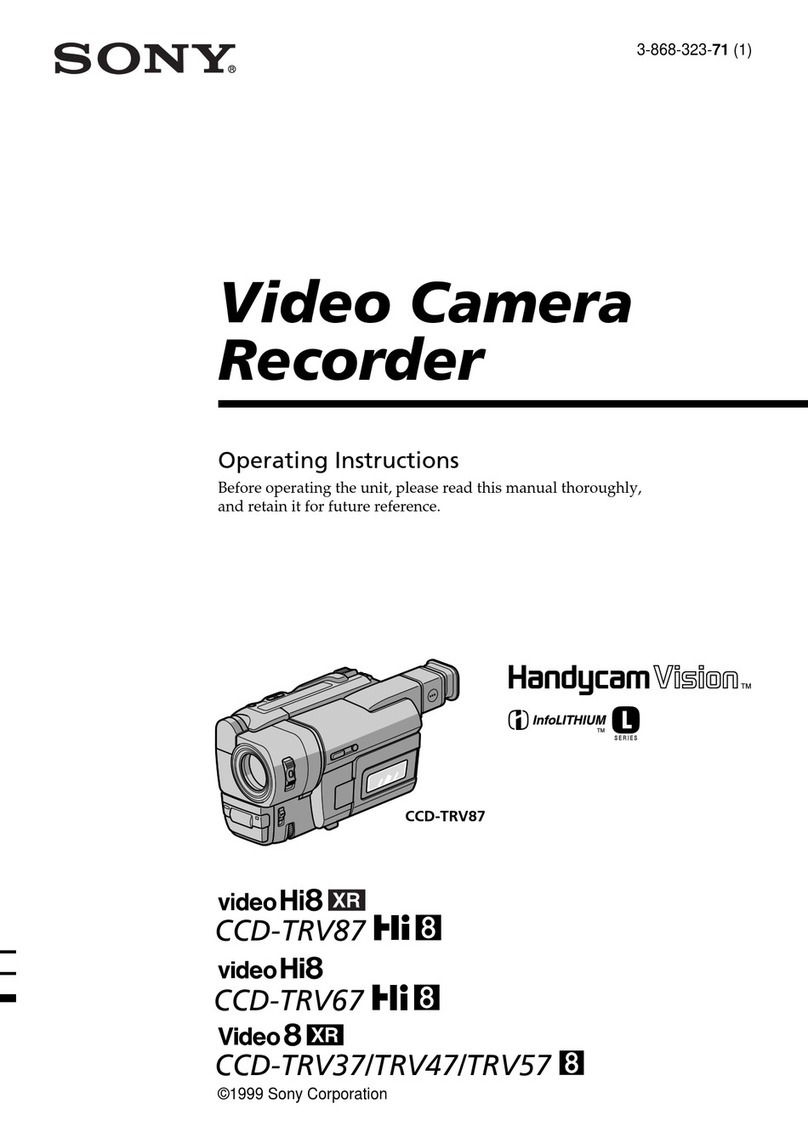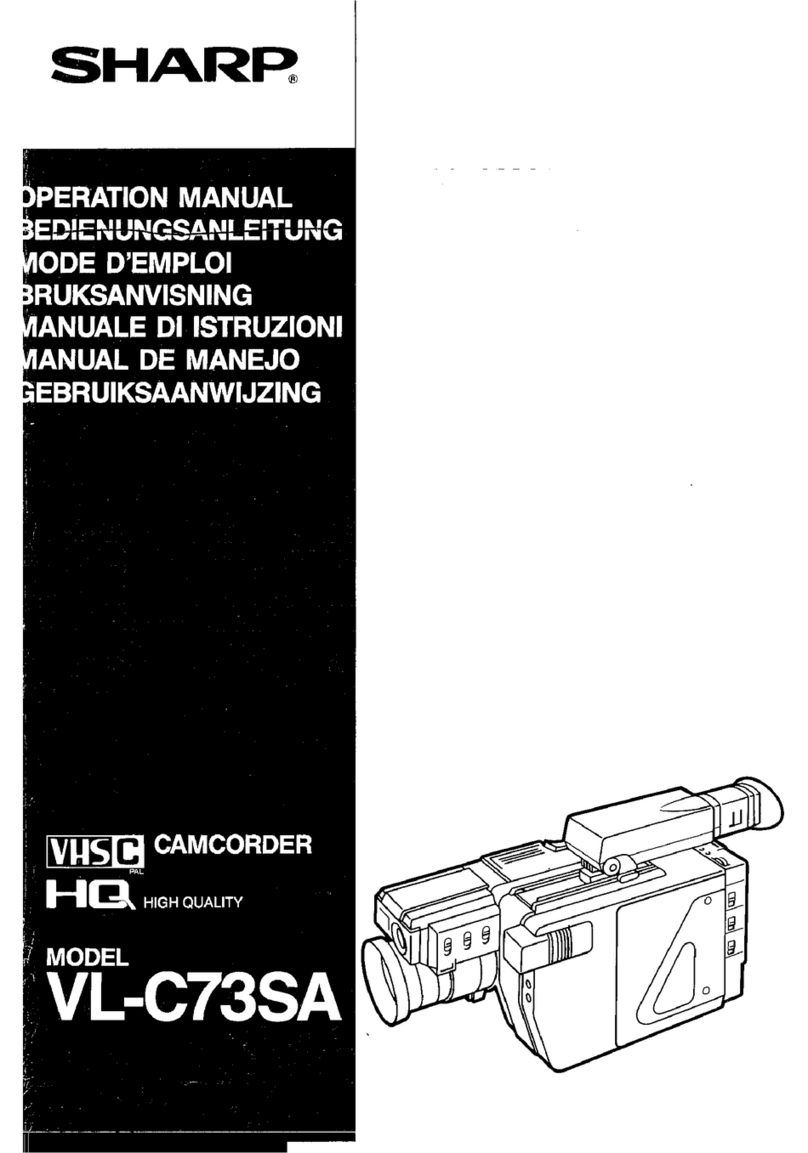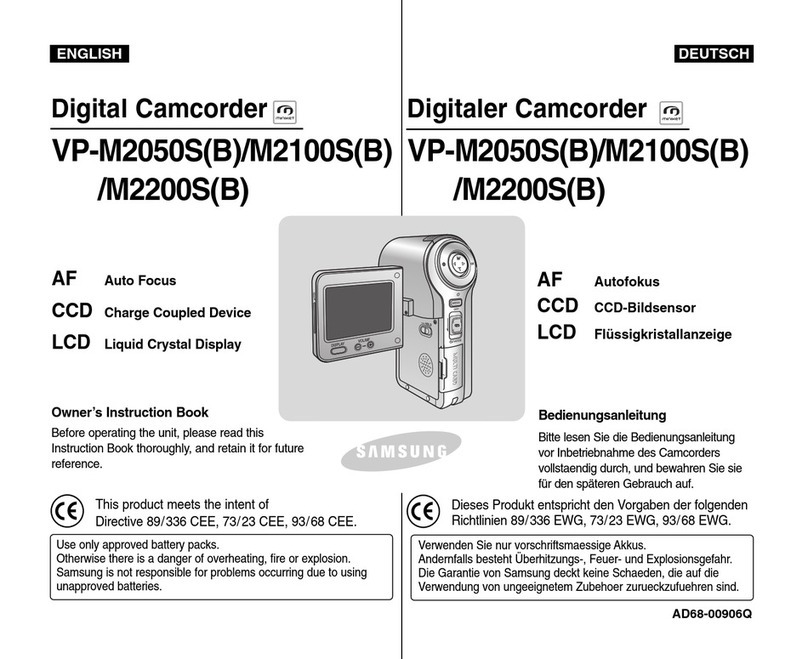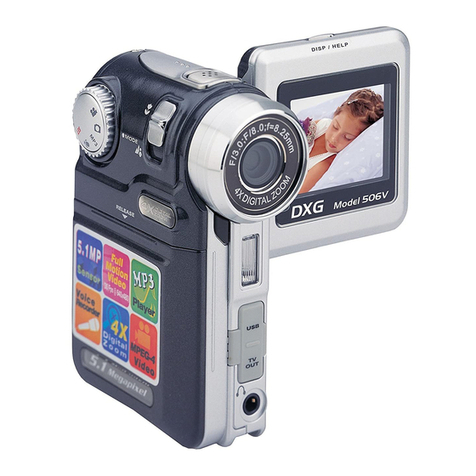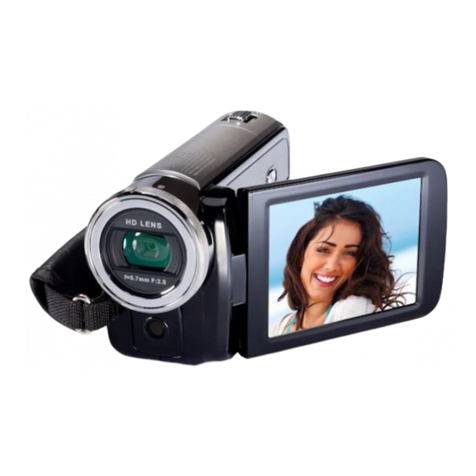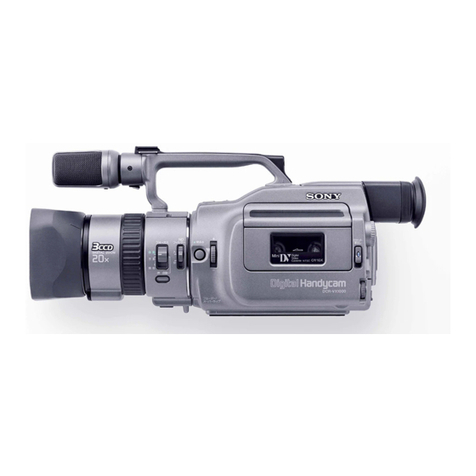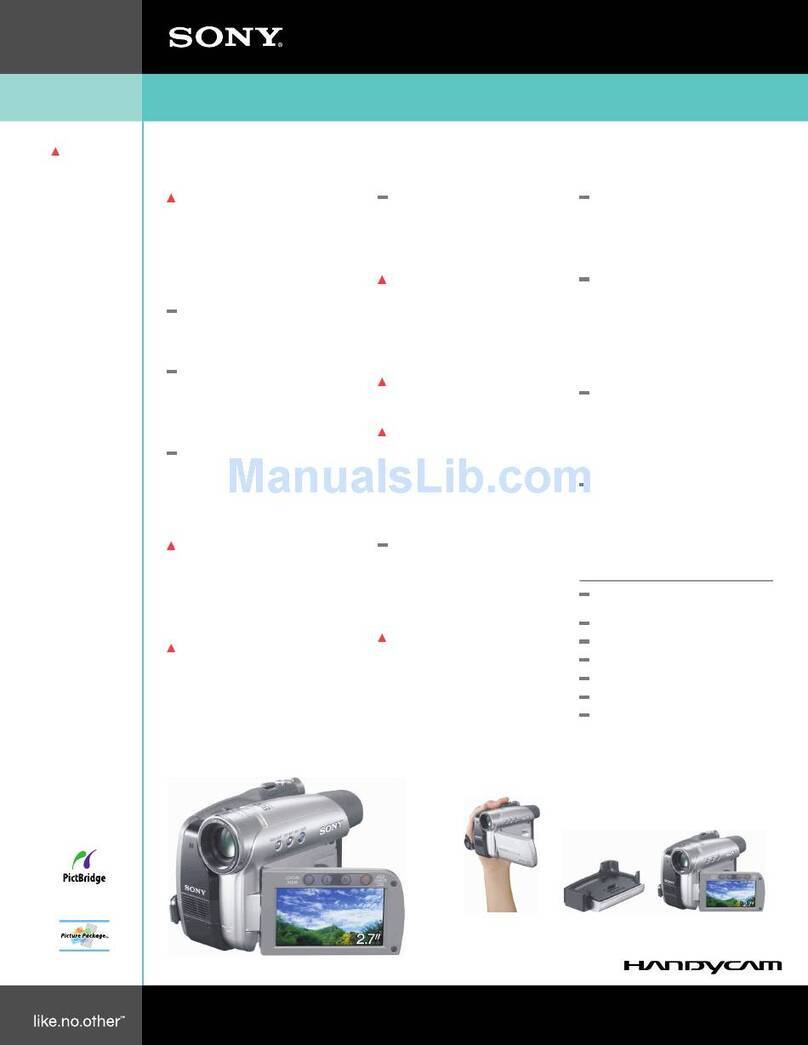Ros PTZ User manual

75-00952 REV D
PTZ
INTEGRATED PAN & TILT CAMERA
OPERATION AND
MAINTENANCE MANUAL
SERIAL NUMBER: __________
SALES ORDER: __________
5618 Copley Drive
San Diego, CA 92111-7902
TEL: (858) 565-8500
FAX: (858) 565-8808
www.rosys.com

75-00952 REV D
II
TABLE OF CONTENTS
WARRANTY ..................................................................................................................IV
CUSTOMER ASSISTANCE............................................................................................V
CHANGE RECORD.......................................................................................................VI
1DESCRIPTION.........................................................................................................1
2PTZ SYSTEM SPECIFICATIONS............................................................................2
2.1 ELECTRICAL ............................................................................................................. 2
2.2 MECHANICAL............................................................................................................ 2
2.3 CAMERA ASSEMBLY................................................................................................ 2
2.4 CAMERA CONTROLS................................................................................................ 3
2.5 CONTROLLER OUTPUTS ......................................................................................... 3
2.6 MATERIALS............................................................................................................... 3
2.7 ENVIRONMENTAL..................................................................................................... 3
2.8 STANDARD PTZ CONNECTORS .............................................................................. 5
2.9 OPTIONAL ACCESSORIES....................................................................................... 5
3CAMERA OPERATION...........................................................................................6
3.1 INTERCONNECTION................................................................................................. 6
3.2 INSTALLATION.......................................................................................................... 7
3.3 EXPOSURE CONTROL ............................................................................................. 8
3.4 ZOOM CONTROL ...................................................................................................... 9
3.5 DIGITAL ZOOM CONTROL........................................................................................ 9
3.6 FOCUS CONTROL....................................................................................................10
3.7 NEGATIVE COLOR VIDEO OR BLACK &WHITE CONTROL....................................10
4SERVICE AND REPAIR........................................................................................11
4.1 CAMERA MODULE REPLACEMENT........................................................................11
4.2 LED PLATE &CAMERA PORT REPLACEMENT ......................................................13
4.2.1 LED PLATE REPLACEMENT............................................................................................13
4.2.2 CAMERA PORT REPLACEMENT .....................................................................................14
4.3 QUAD SEAL AND O-RING SERVICING....................................................................16
4.3.1 TILT QUAD SEAL REPLACEMENT...................................................................................16
4.3.2 PAN QUAD SEAL REPLACEMENT...................................................................................23
4.3.3 O-RING REPLACEMENT...................................................................................................25
4.4 SLIP CLUTCH SETUP...............................................................................................25
4.5 VACUUM TEST AND PURGE ...................................................................................27
4.5.1 VACUUM TEST..................................................................................................................27
4.5.2 PURGE PROCEDURE.......................................................................................................27
4.6 ROUTINE MAINTENANCE AND CLEANING.............................................................27
5APPENDIX.............................................................................................................28

75-00952 REV D
III
TABLE OF FIGURES
Figure 1: IMPULSE MHDL-24-BCR Pin-out (Face View)................................................5
Figure 2: PCI Adapter (75-00989-01)..............................................................................6
Figure 3: Cable Deployment Clamp Assembly (75-00990-01) W/ Captive Hardware
(Included).................................................................................................................6
Figure 4: Streamlined Screw Protector Assembly (75-00991-01) W/ Captive Hardware
(Included).................................................................................................................6
Figure 5: 1/4-20 Mounting and Connector Clearance Dimensions..................................7
Figure 6: Cable Deployment Clamp Installation ..............................................................8
Figure 7: PCI Adapter Installed.......................................................................................8
Figure 8: Camera Module Removed From Housing......................................................11
Figure 9: Camera Module Connections.........................................................................12
Figure 10: Module Removal..........................................................................................12
Figure 11: Module Housing O-Ring Replacement.........................................................13
Figure 12: LED Plate Removed.....................................................................................14
Figure 13: Camera Port Assembly ................................................................................15
Figure 14: Cross Section of O-Ring in Camera Port Groove.........................................15
Figure 15: Side Covers Removed, Right & Left Views..................................................17
Figure 16: Timing Belt Removal....................................................................................18
Figure 17: Right Side Arm Removed.............................................................................19
Figure 18: Tilt Axis Quad Seal in Groove......................................................................19
Figure 19: Camera Module Housing and Tilt Arms Reassembled.................................20
Figure 20: Extended Point Set Screw Installation .........................................................21
Figure 21: Timing Belt Installation.................................................................................21
Figure 22: Belt Splice Point Positioning.........................................................................22
Figure 23: Correct Timing Belt Setup............................................................................22
Figure 24: Zip-Tie Cut for Pan Shaft Removal ..............................................................23
Figure 25: Pan Shaft Snap Ring Removal.....................................................................24
Figure 26: Pan Shaft Removed.....................................................................................24
Figure 27: Main Connector O-Ring Locations...............................................................25
Figure 28: Slip Clutch And Motor Removed..................................................................26
Figure 29: Slip Clutch Adjustment Specs......................................................................26

75-00952 REV D
IV
WARRANTY
ROS, Inc. (hereinafter called "ROS") warrants its products as stated below subject to the
conditions specified.
ROS warrants its products, when operated under normal conditions, to be free from defects in
material or workmanship for a period of one year from the date of purchase provided that
inspection by ROS discloses that such defects developed under normal and proper use. ROS
products repaired or replaced pursuant to this warranty shall be warranted for the unexpired
portion of the warranty applying to the original product. The liability of ROS under this warranty
shall exist subject to the following conditions:
(a) Purchaser properly notifies ROS of such defects and the defective product is
returned to ROS, transportation charges paid by Purchaser.
(b) ROS shall be released from all obligations under its warranty in the event repairs
or modifications are made by persons not authorized by ROS.
(c) Representations and warranties made by any person, including distributors and
representatives of ROS, which are inconsistent or conflict with the terms of this
warranty, shall not be binding upon ROS unless reduced to writing and approved
by an officer of ROS. ROS shall in no event be liable for other direct, special,
incidental, consequential, indirect or penal damages.
(d) The laws of the State of California shall govern this warranty.
In the event the defect is determined to be within the terms of this warranty then ROS agrees to
repair and/or replace (at ROS' discretion) the product or defective portion at no charge to the
Purchaser. This warranty does not apply to expendable items or to normal wear-and-tear, and
is conditional upon performance of normal preventative maintenance procedures.
Our commitment to quality and customer service directs us to constantly strive to improve our
products. The materials and specifications presented in our manuals and data sheets are
correct and accurate to the best of our knowledge, and are presented in good faith. However,
the information is not guaranteed and is subject to change without notice.
LIMITATIONS OF REMEDIES
Purchaser assumes all risk and liability for results obtained in any installation, operation, or use
of the product. Purchaser’s sole remedy for any breach of warranty by vendor shall be limited to
the “express remedies” set forth above. Otherwise, in no event shall vendor, its agents, or
employees be liable to the original purchaser or any third party for any consequential or
incidental damages or expenses of any nature arising directly out of or in connection with the
use of vendor projects, even if vendor has been advised of the possibility of such damages or
expenses. In any event, unless otherwise contrary to state law, vendor liability under this
limited warranty shall not exceed the purchase price of the product.

75-00952 REV D
V
CUSTOMER ASSISTANCE
ROS, Inc. uses a worldwide network of stocking distributors and representatives who
are familiar with our products and are able to provide assistance during installation
and/or operation of these products.
If you have any questions or problems with this product that are not covered by this
manual or instruction, please contact our agent in your area, or contact us directly by
phone or FAX or e-mail.
TEL: (001) 858-565-8500
FAX: (001) 858-565-8808
Web Site: www.rosys.com

75-00952 REV D
VI
CHANGE RECORD
REV DESCRIPTION INITIAL DATE
A Initial release TBB 06JUL10
B SEE EC-00873 BAL 13SEP11
C SEE EC-00909 NH 07NOV11
D SEE EC-01033 MLC 03APR12

75-00952 REV D
1
1 DESCRIPTION
This manual describes the installation and operation of the PTZ Integrated Pan & Tilt
Camera System designed by Remote Ocean Systems (ROS). The PTZ is a high-
performance color zoom standard (-01) or high definition (-02) camera system which
incorporates pan and tilt control mechanisms with analog speed control and left/right
dimmable, high-intensity LED lights.
The PTZ camera is illustrated by the installation drawings in the appendix. The camera
housing is constructed of anodized aluminum. It is designed to be operated in
radioactive environments up to 1000 R/hr (5000 R/hr manual focus only) and in
underwater applications to 70 meters water depth. The front window is made of impact-
resistant, optical-grade acrylic. The standard external connector is an IMPULSE
MHDL-24-BCR stainless-steel connector.
The PTZ utilizes a CMOS image sensor coupled with a 10:1 optical zoom lens (12x
digital zoom) for video capture. Auto-Focus and Auto-Exposure are enabled upon
power-up, but can be overridden with manual control at any time.
The PTZ offer 360 degrees continuous rotation on the pan axis by means of an internal
slip ring. Both axes offer variable speed control for precise camera orientation.

75-00952 REV D
2
2 PTZ SYSTEM SPECIFICATIONS
2.1 ELECTRICAL
SYSTEM
Input Power
100-250 VAC, 48-62Hz (40W)
2.2 MECHANICAL
CONTROLLER
Controller (W x H x D)
19” x 3.46” x 14.8”
Weight
11.6 lbs
CAMERA ASSEMBLY
Dimensions (W x H x D)
13.0” x 4.8” x 3.4”
Weight in Water
5.6 lbs [2.5 kg]
Weight in Air
11.6 lbs [5.3 kg]
CABLE
Dimension(Length)
Up to 300 ft. [91 m]
Weight
280 lbs/mft
Jacket Material
Nuclear Grade High Abrasion Resistant
Minimum Bend Radius
10"
Number of Conductors
Triple Coax w/ 18 conductors
Controller-side Connector
Amphenol - PT02A-20-24S
Camera-side Connector
Impulse - MHDL-24-FCR
2.3 CAMERA ASSEMBLY
CAMERA
Power
10 VDC, 3.8 W
Image sensor
1/3-type CMOS
Video Format (-01 Camera Assembly)
SD: Y/C (NTSC Format)
Aspect Ratio (-01 Camera Assembly)
4:3
Video Format (-02 Camera Assembly)
HD : Y/Pb/Pr 1080i (NTSC Format)
Aspect Ratio (-02 Camera Assembly)
16:9
Zoom Range
10:1 Optical (12x Digital)
Focus Range
Front port of camera to infinity
FOV in Water
35° Horizontal Full Wide
Picture Effects
Black & White, Negative Image

75-00952 REV D
3
PAN & TILT
Pan Range
360° continuous rotation
Tilt Range
+/- 160° (146° without image clipping)
Pan Speed Range
Variable 0-15°/sec
Tilt Speed Range
Variable 0-15°/sec
Motor/Camera Protection
Slip clutch protection, both axes
LED LIGHTS
Intensity
≥ 500 Lux @ 1m, viewing up to 15ft
Controls
Left & Right independent dimming
2.4 CAMERA CONTROLS
Zoom: Manual
Digital Zoom: Allows for further reduced viewing angles
Focus: Automatic or manual
Exposure: Automatic or manual
Negative Image: Manual
Black & White Image Manual
2.5 CONTROLLER OUTPUTS
Video outputs (-01 Controller Assembly)
SD: Y/C, Composite (NTSC Format)
Aspect Ratio (-01 Controller Assembly)
SD: 4:3
Video Outputs (-02 Controller Assembly)
HD: Y/Pb/Pr 1080i (NTSC Format)
SD: Y/C, Composite (NTSC Format)
Aspect Ratio (-02 Controller Assembly)
HD:16:9
SD: 4:3
2.6 MATERIALS
Housing Material:
Anodized Aluminum (6061-T6)
Viewing Port:
Optical grade acrylic
LED Ports:
Lexan Polycarbonate
2.7 ENVIRONMENTAL
Operating Depth
70 m (230 ft) standard

75-00952 REV D
4
Operating Temperature
0°C to 50°C (32°F to 122°F), tested to 50°C
Storage Temperature
-20°C to 60°C (-4°F to 140 °F)
Radiation Tolerance (Dose Rate)
1,000 R/hr (5,000 R/hr manual focus only)
Radiation Tolerance (TID)
60,000 R

75-00952 REV D
5
2.8 STANDARD PTZ CONNECTORS
Main Connector IMPULSE MHDL-24-BCR
Inline Mating Connector IMPULSE MHDL-24-CCP
Figure 1: IMPULSE MHDL-24-BCR Pin-out (Face View)
2.9 OPTIONAL ACCESSORIES

75-00952 REV D
6
Figure 2: PCI Adapter (75-00989-01)
Figure 3: Cable Deployment Clamp Assembly (75-00990-01) W/ Captive Hardware (Included)
Figure 4: Streamlined Screw Protector Assembly (75-00991-01) W/ Captive Hardware (Included)
3 CAMERA OPERATION
NOTE: BEFORE CONNECTING THE CABLE TO THE CAMERA, CHECK THE
INSIDE OF THE CAMERA'S CONNECTOR AND MAKE SURE THAT THE O-RING IS
PRESENT (SEE Figure 27 ON PAGE 25). IF THIS O-RING HAS FALLEN OUT AND
IS MISSING, WATER MAY LEAK INTO THE CONNECTION CAUSING SHORTS.
3.1 INTERCONNECTION
Electrical connection from the controller to the PTZ camera must be made with the
underwater cable for the system to work.
NOTE: PRIOR TO INTERCONNECTING YOUR CABLE, MAKE SURE THE

75-00952 REV D
7
CONTROLLER IS NOT POWERED OR IN THE OFF POSITION. CONNECTING A
PTZ WHILE THE POWER IS ON MAY CAUSE DAMAGE TO THE PTZ DUE TO
INTERMITTENT VOLTAGE SPIKES.
NOTE: WHEN CONNECTING THE UNDERWATER CABLE TO THE CAMERA,
MAKE SURE THE ALIGNMENT FEATURES ON BOTH CONNECTORS ARE
CORRECTLY POSITIONED, THE CONNECTOR IS FULLY SEATED AND THE
LOCKING SLEEVE IS HAND TIGHT.
3.2 INSTALLATION
The PTZ camera is designed to be adaptable for several different deployment methods.
The camera can be directly mounted using the 4 1/4-20 threaded holes on its mounting
plate. Maximum screw depth is .30" from the top of the mounting plate. Clearance for
the connector is required in any mounting surface. See Figure 5 for mounting
dimensions.
Figure 5: 1/4-20 Mounting and Connector Clearance Dimensions
The camera may also be cable deployed using the optional Cable Deployment Clamp
(Figure 3). When used with the Streamlined Screw Protector (Figure 4), the Cable
Deployment Clamp will maintain a streamlined profile at the top of the camera,
preventing snags when the camera is removed from tight spaces.
To use the Clamp, first slide the Screw Protector onto the cable and connect the cable
to the camera. Place the two halves of the Clamp around the cable so that it rests on
the camera's mounting plate and slide the Screw Protector down over it so that the
hardware in the Screw Protector is aligned with the clearance holes in the Clamp.
Fasten the Screw Protector to the camera's mounting plate, then tighten the two screws
in the Clamp so that it grips onto the cable. When properly installed, the Cable
Deployment Clamp will provide strain relief for the molded connector.

75-00952 REV D
8
Figure 6: Cable Deployment Clamp Installation
An optional PCI Pole Adapter (Figure 2) is available as well. The cable is routed
through the side of the Pole Adapter, which is fastened to the mounting plate using the
Streamlined Screw Protector.
Figure 7: PCI Adapter Installed
3.3 EXPOSURE CONTROL
The PTZ Camera provides operation over a wide range of scene illuminations. To
achieve this wide range the camera automatically adjusts Exposure Control through
composite operation of the iris, video gain, and shutter modes. For optimum viewing
results, turn led lights on full and stop down the manual iris until the best picture is

75-00952 REV D
9
achieved. Exposure control works in steps, the exposure button needs to be pushed
and depressed in the appropriate direction in order to increment or decrement one step.
The camera’s iris, gain, and shutter functions are all controlled by an internal
microprocessor. This automatic mode is normally selected when the camera is turned
on. As illumination is increased from complete darkness, the AGC (automatic gain
control) is the first function to operate from maximum to minimum gain. At the point of
minimum gain the iris begins to function, closing as the illumination continues to
increase. If the illumination continues to increase with the lens fully closed, the camera
goes into a shutter mode where the CMOS sensor is allowed to capture light over
decreasing time intervals as the illumination increases. When the manual exposure
control is actuated, the function changes from automatic to manual mode giving the
operator full control of this function. If the operator wishes to return the camera to
automatic exposure mode, EXP DEC and ZOOM WIDE are to be simultaneously
actuated as indicated on the front panel of the control unit.
3.4 ZOOM CONTROL
The zoom lens operates when the zoom control switch is actuated in the Zoom Tele or
Zoom Wide direction. The zoom function continues until the switch is released by the
user or the lens zoom limit is reached. Tele operates towards increasing focal length
settings providing reduced viewing angles with increased magnification of objects in the
scene.
When zooming towards the tele end from the full wide end, the optical zoom is activated
until the optical zoom limit is reached. Once the optical zoom limit is reached, the digital
zoom will seamlessly take over.
When using the zoom functions of the PTZ Camera system, the operator should be
aware of the change in the minimum object distance (MOD) as the viewing angle
changes. As zoom increases, the MOD increases as well.
3.5 DIGITAL ZOOM CONTROL
The Digital Zoom feature allows the user to decrease the viewing angles and magnify
the scene beyond normal optical zoom. When zooming tele from the wide end of the
zoom range, the camera will use optical zoom until the optical zoom limit is reached. At
this limit the digital zoom will seamlessly take over and further magnify the scene. Note
that as you zoom further into the digital zoom range the picture becomes grainier. For
optimal picture quality, the digital zoom range should not be used.

75-00952 REV D
10
3.6 FOCUS CONTROL
The PTZ camera defaults to the auto-focus mode. The auto-focus provides nearly ideal
focusing when the camera is aimed at a scene. However, there may be instances
when there is a need for focusing on specific features of an object. Operation in a
manual focus mode will be required for such viewing. When the focus control switch is
actuated, the function changes from automatic to manual mode giving the operator full
control of this function. The auto-focus relies on edges to focus. One set of conditions
which may force the operator to switch into manual mode occurs when viewing a
relatively close object that has minimal detail. This occurs because the Auto-Focus
system relies on increasing the sharpness of edges in the viewed image in order to
optimize the focus. If there are no edges to utilize for this auto-focus process, the
camera will not be able to properly compensate and may even tend to "hunt" around the
optimum focus point. Focus hunting may also be caused by low illumination or thermal
currents in the water. If the camera is unable to properly sharpen edges auto-focus
operation will be less than optimal. Switching to manual focus is the best option. To
return to the automatic mode, ZOOM WIDE and FOCUS FAR are to be simultaneously
actuated as indicated on the front panel of the control unit.
3.7 NEGATIVE COLOR VIDEO or BLACK & WHITE CONTROL
Another built in function is the negative color or black & white video effect. This function
is useful when an immediate change in contrast is needed. In negative color video
mode, dark colors will be turned white and light colors, as well as white illumination, will
turn dark. This can allow the user to see details in a shadowed area, like a crack. From
a color picture, to activate the negative color function, ZOOM TELE and FOCUS NEAR
must be toggled simultaneously. From a negative art picture, to activate black & white
function ZOOM TELE and FOCUS NEAR must be toggled simultaneously again.
Toggle ZOOM TELE and FOCUS NEAR simultaneously once again from black & white
picture mode to return to standard color.

75-00952 REV D
11
4 SERVICE AND REPAIR
NOTE: IT IS RECOMMENDED THAT LOCTITE 222, VIBRA-TITE OR AN
EQUIVALENT THREAD LOCKING COMPOUND BE APPLIED TO ALL FASTENERS
BEFORE THEY ARE INSTALLED.
4.1 CAMERA MODULE REPLACEMENT
Replacement of the PTZ camera module requires the following:
Module Replacement Assembly (75-00958-01, see drawing in Appendix)
#3 Phillips Screw Driver
7/64" Allen Wrench
Silicone O-Ring Grease (included in PTZ Maintenance Kit, 75-00997-01)
To replace the module, follow these steps:
1. Loosen the 4 screws on the back of the camera module housing. The module is
attached to this back piece and will slide out along with it. You will only be able
to pull out the module a few inches while the wire harnesses are still attached to
it.
Figure 8: Camera Module Removed From Housing
2. Detach the two connectors from the camera module.

75-00952 REV D
12
Figure 9: Camera Module Connections
3. Remove the 1/4-20 screw at the bottom of the module, then remove the module.
Figure 10: Module Removal
4. Set the replacement module on the plastic mounting plate and push it backward
against the tacky gap-pad until the threaded hole in the module lines up with the
screw hole in the mounting plate. This ensures good thermal contact with the
housing.
5. Apply Vibra-tite, or an equivalent thread locking compound, to the 1/4-20 flat
head screw included with the module and screw the module to the mounting
plate.
6. A replacement for the -039 size o-ring shown in Figure 11 is included with the
replacement module. Replacing this o-ring at this time is recommended. Make
sure the o-ring groove is free of dirt and debris. Lubricate the new o-ring with
silicone lubricant and insert into the groove as shown.

75-00952 REV D
13
Figure 11: Module Housing O-Ring Replacement
7. Make sure there are no fingerprints or foreign matter on the lens of the camera
module before reinserting it into the housing. If necessary, clean it with lens
cleaner and a lint free cloth.
8. Reconnect the two connectors to the camera module and re-insert the module
into the housing. As you insert the module, guide the wires so they sit on top of
the wire management shelf inside the module housing. This will prevent
snagging the next time the module is removed.
9. Make sure that the o-ring is still seated correctly in the groove and that no wires
have been pinched, then re-tighten the 4 screws on the back cover of the module
housing.
10.Connect the PTZ to a controller and test operation of the camera and LEDs prior
to redeploying the camera.
11.Purge the camera. Refer to Section 4.5.2 for the Camera Purge Procedure.
4.2 LED PLATE & CAMERA PORT REPLACEMENT
4.2.1 LED PLATE REPLACEMENT
The integrated LED lights should not need to be replaced often. However, over time the
light from the LEDs will become increasingly blue and light output will be diminished,
which will signal that the LED Plate will need to be replaced.
Replacement of the PTZ LED Plate requires the following:
LED Face Plate Replacement Assembly (75-00959-01, see drawing in Appendix)
3/32" Allen Wrench
Silicone O-Ring Grease (included in PTZ Maintenance Kit, 75-00997-01)
To replace the LED Plate, follow these steps:
1. Loosen the 4 screws and pull off the LED Plate to expose the connector.
Disconnect the inline connector and the LED Plate can be removed.
-039 Size O-Ring
Wire Management
Shelf

75-00952 REV D
14
Figure 12: LED Plate Removed
2. The new LED Face Plate Replacement Assembly includes a replacement -039
size o-ring (shown in Figure 12). Replacing the o-ring at this time is
recommended. Make sure the o-ring groove is free of dirt and debris. Lubricate
the new o-ring with silicone lubricant and insert into the groove as shown.
3. Reconnect the connector to the new LED Plate. When putting the LED Plate
back on the camera module housing, make sure to slide in the wire management
shelf (see Figure 11) under the wires going to the camera module. Be careful not
to damage the wires or pull out the camera's connections.
4. Make sure the o-ring is still correctly seated in the groove and tighten the 4
screws.
5. Connect the PTZ to a controller and test operation of the camera and LEDs prior
to redeploying the camera.
6. Purge the camera. Refer to Section 4.5.2 for the Camera Purge Procedure.
4.2.2 CAMERA PORT REPLACEMENT
NOTE: IF CAMERA MODULE AND LED PLATE ARE BEING REPLACED AT THE
SAME TIME, MAKE SURE THAT THE LED PLATE IS INSTALLED FIRST IN THE
CORRECT ORIENTATION. THE WIRE MANAGEMENT SHELF ON THE INSIDE OF
THE LED PLATE MUST BE INSTALLED TOWARD THE TOP OF THE MODULE
HOUSING WITH THE PORT FACING FORWARD. REFER TO THE ASSEMBLY
DRAWING 75-00953-01 IN THE APPENDIX FOR REFERENCE.
The LED Plate Replacement Assembly comes with a new Camera Port already
installed. However the port can also be replaced independently.
Replacement of the PTZ Camera Port requires the following:
Camera Port Replacement (75-00962-01)
LED Plate
Connector
-039 Size O-Ring
Table of contents



